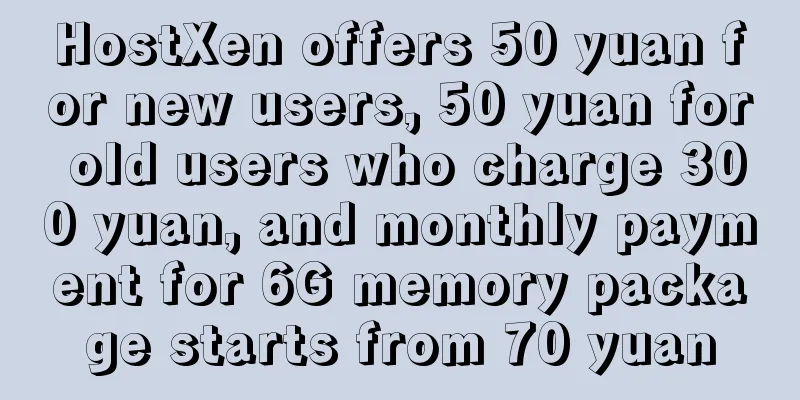If operators want to make profits, they should eliminate 4G packages first.

|
After 2019, the first year of 5G, and 2020, when 5G is rapidly popularized, more people should use 5G packages. However, from my own observation, few people around me choose to upgrade to 5G packages, even though operators have made more calls and more intensive promotions to promote 5G packages. At the same time, operators are quietly removing low-priced SIM card packages from the shelves, and the more expensive new 5G packages are occupying prominent promotional positions. So, do you really need to give up your 4G package and upgrade your consumption? Disappearing Internet Packages Starting in 2016, China Unicom started the trend of Internet packages with the launch of Tencent King Card, the first to take the plunge. The core advantages of these new packages are low monthly fees, more targeted traffic, and cheaper traffic outside the packages. China Unicom, which has long been at a disadvantage in the competition, has found a way out under the pressure of its competitors by leveraging the power of Internet vendors. The effect of China Unicom's new strategy is obvious. By the middle of 2018, the number of Tencent King Card users had exceeded 100 million. China Telecom also followed up early and launched corresponding packages. China Mobile, the strongest operator, was slow to join the battle, but later it couldn't help but be tempted. Around 2018, Internet packages emerged like mushrooms after rain, and the three major operators' Internet number cards added up to hundreds of models. It is not difficult to see that China Unicom first embraced Internet packages and launched cheap traffic, which was nothing more than winning by price and breaking through the siege. At the beginning, the operator's wishful thinking was to attract new young users through low-priced traffic while retaining the original traditional packages. Moreover, the operator channels still promoted the original packages, while the Internet packages were marketed on the corresponding Internet platforms. At that time, the operator did not allow old users to switch to Internet packages, which was essentially a form of price discrimination. On the one hand, it allowed the original group to continue using high-priced packages, and on the other hand, it expanded the user base through low-priced packages. However, due to a large number of consumer complaints and a ban issued by the Ministry of Industry and Information Technology, the operators' plan failed. More and more people switched to cheaper Internet packages, and some packages with single-digit monthly rents became a means for many people to keep their numbers. After entering the 5G era, more expensive 5G packages have been introduced, and the original low-priced 4G packages have been quietly removed from the shelves. Taking a Unicom card that I personally use in Guangzhou as an example, the monthly fee for the package that can be changed in the online business hall is as low as 39 yuan, and the 5G package is as low as 99 yuan. Moreover, the original low-priced Internet packages have been gradually cleared. At present, the monthly rental fee of most Internet packages is more than 19 yuan. For example, the newly launched Mi Fan King Card package has a monthly rental of 19 yuan, but the price of traffic outside the package has quietly become 5 yuan per GB, which is in line with the 5G package. Xiaomi's original Mi Fan Card with a monthly rental of 5 yuan can still be found on the official website, but it is no longer available. 5G packages are expensive, but operators still can't make back their money? From a global perspective, China's 5G advancement is quite rapid, and the three major operators are basically running at full capacity. Take Guangzhou, where I live, for example. Over the past year or so, I can clearly feel that the coverage of 5G base stations is rapidly expanding. Recently, the Guangdong Provincial Department of Industry and Information Technology stated: From January to August this year, 61,625 new 5G base stations were built in the province, completing 128.4% of the provincial government's target of 48,000 base stations. The number of 5G package users in the province reached 20.74 million, and a total of 98,613 5G base stations were built (the number of macro base stations accounts for about 15% of the country), both of which ranked first in the country. But at the same time, since 5G requires higher frequencies, more base stations need to be built than 4G to achieve the same coverage, which makes the cost of 5G construction extremely high. According to the latest financial reports of the three major operators, in the first half of this year, China Mobile, China Unicom and China Telecom invested 55.2 billion yuan, 16.2 billion yuan and 20.2 billion yuan in 5G respectively. In comparison, the net profits of the three major operators in the first half of the year were 55.77 billion yuan, 3.344 billion yuan and 13.949 billion yuan respectively. It is not difficult to see that among the three major operators, except for China Mobile, whose profits can barely cover the cost of 5G construction, China Unicom and China Telecom are still in the stage of losing money and making a fuss about 5G. According to official data, as of June 30 this year, the number of China Mobile 5G package users was 70.2 million, and China Telecom was 37.84 million (China Unicom has not announced), totaling 108 million. However, 5G package users are not equal to users who are actually using 5G mobile phones and can experience 5G networks. The data recently released by the China Academy of Information and Communications Technology is more practical. As of the end of July, the number of domestic 5G users reached 88 million, accounting for 80% of the world. However, at this stage, the proportion of 5G users is still relatively low, and there is still a long way to go before real profitability. Operators are gradually removing low-priced packages and fully promoting 5G packages. Behind this is the huge cost pressure brought by the high investment in 5G. Recognize the needs and upgrade carefully In many previous articles, we have already popularized that according to the current policies of operators, 5G mobile phones with 4G cards and 4G packages can also access the 5G network and experience 5G technology normally, but the maximum downlink rate will be limited to 300Mbps, which is much faster than the 4G network speed. 5G packages are divided into different price ranges. Low-priced packages can enjoy a maximum network speed of 500Mbps, while high-priced packages can reach 1000Mbps. However, in actual use, it is still difficult for 5G packages + 5G mobile phones to reach the theoretical maximum rate. In comparison, continuing to use 4G packages to experience the 5G network is a better choice. Therefore, before upgrading to a 5G package, it is recommended that you consider carefully. First of all, the prerequisite for upgrading to a 5G package is that your hardware conditions meet the requirements, including that your mobile phone supports the 5G network and that the city where you live has 5G network coverage. Although 5G base stations are being laid out very quickly, the 5G coverage in many small and medium-sized cities is still very limited or even non-existent. In this case, even if you upgrade to a 5G package, you cannot really enjoy the 5G network speed, but you have to pay a higher price, which is obviously not cost-effective. Secondly, considering that operators have removed a large number of 4G packages, especially Internet packages, before upgrading to 5G packages, you must consider the issue of irreversibility. Packages such as Mifen Card and Dayun Card, which are more cost-effective, can no longer be transferred. In addition, when upgrading to a 5G package, you must also fully consider whether there is a real demand for a high-speed 5G network. As mentioned earlier, after upgrading to a 5G package, the maximum network rate will be further improved. But to be honest, at this stage, 5G construction is mainly based on NSA, and the most intuitive experience is the increase in network speed, while advantages such as latency are not obvious in actual use. Moreover, there are no real killer 5G applications yet. Watching high-definition videos, playing online games, and browsing Weibo Moments, 4G networks can fully meet the needs. The network speed advantage of 5G can only appear in relatively limited scenarios such as large file downloads. After three quarters of 2020, we can find that the popularity of 5G this year is in an accelerated stage. Almost all new phones launched by manufacturers are 5G products, and they have already reached the 100-yuan phone market. The recently launched iPhone 12 also comes with 5G as standard across the board. In other words, 5G is almost a must-have option when buying a mobile phone now and in the future. From a longer-term perspective, the operators' talk of a decrease in 5G traffic and lower unit prices is of course a future trend. However, as ordinary consumers, we will pay more attention to the pros and cons at this stage. In the context of high prices for 5G packages and the quiet removal of low-priced 4G packages, it is recommended that you do not be misled by sales calls and promotional advertisements, and wait and see for the time being. |
>>: What are digital certificates and signatures? This article explains it very well
Recommend
Wang Xiaochu: Prepare for 5G and avoid making the same mistakes as in the 4G era
Recently, Wang Xiaochu, Chairman and Chief Execut...
[11.11] TmhHost 30% off, Los Angeles CN2/Japan Softbank/Hong Kong CN2 monthly payment starts from 21 yuan
TmhHost has launched this year's Double 11 pr...
Temperature compensation: What is compensated is not actually the temperature?
How do batteries work? In communication power sup...
PacificRack: Windows VPS in Los Angeles Data Center starting at $12 per year
PacificRack has released several discounted VPS p...
5G and the edge: Convergence is accelerating
[[422919]] When evaluating the technologies that ...
Enterprise Switches and Selection Guide
An enterprise switch is a type of network switch ...
What can I do with 5G network?
Some people say that 4G is enough and there is no...
The three major operators delisted from the US and returned to the A-share market
Recently, China Mobile issued an announcement sta...
What you need to know about HTTP protocol
Today we will analyze the HTTP protocol, which is...
How does the computing power network work?
In the previous articles, I gave you a detailed i...
Cisco, the hero behind the scenes who helps turn good thoughts into good deeds
People often have good intentions in their hearts...
How to attract and train talents in the era of the Internet of Things
We are experiencing a worldwide war for talent wi...
Friendhosting adds a new data center in New Jersey, 30% off on all VDS on Tester's Day
Friendhosting sent the latest email, which inform...
Fault recovery and resource allocation in software-defined optical networks
Preface Traditional IP packet switching networks ...
Huawei releases 5GtoB Suite solution to inject new impetus into the development of network services in the operator industry
[Shanghai, China, November 13, 2020] During the 2...









